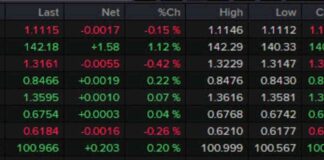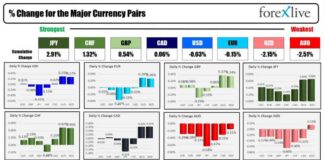Analysis of Latest Inflation Data: Implications for Fed Interest Rate Cuts
Inflation data released this week has sparked renewed speculation and debate among economists and market participants regarding the Federal Reserve’s potential interest rate cuts. While the encouraging inflation figures have eased concerns about whether the central bank will lower rates, the focus has now shifted to the timing and magnitude of these cuts.
Debate on Magnitude of Rate Cuts
Some analysts argue that a significant rate cut at the September policy meeting is crucial to prevent a possible economic slowdown. With recent data indicating a weakening labor market, there is growing pressure on the Federal Reserve to act decisively. However, Fed Chair Jerome Powell has emphasized that while a rate cut in September is a possibility, it is not a certainty.
The shift in focus from inflation to economic growth has prompted discussions about the potential impact of the Fed’s policy decisions. Chris Zaccarelli, Chief Investment Officer at Independent Advisor Alliance, noted the importance of the Fed’s cadence of cuts in response to changing market conditions.
Concerns Over Labor Market and Inflation
The Federal Reserve, with its mandate to promote price stability and maximum employment, is closely monitoring both inflation and labor market trends. While inflation has been relatively subdued, concerns have been raised about deteriorating labor market conditions. The Fed’s decision on interest rates will be influenced by these factors as well as other economic indicators.
Recent inflation data, including the July consumer price report, showed a decline in annual inflation below 3% for the first time in three years. This cooling inflation, coupled with shifts in the labor market, has raised calls for a significant rate cut in September to avoid a potential recession. However, not all experts agree on the necessity of such a drastic move.
Market Expectations and Rate Projections
Traders are closely monitoring the likelihood of a rate cut at the September meeting, with some projecting a 37% chance of a 50 basis point reduction in the federal funds rate. This projection has fluctuated in response to economic data and market sentiment, indicating the uncertainty surrounding the Fed’s upcoming decision.
Scott Anderson, Chief U.S. Economist at BMO Capital Markets, cautioned against a panicked rate cut based solely on the latest inflation report. While the data may support a rate reduction, the extent of the cut remains a topic of debate among analysts and investors.
Clarity from Federal Reserve Officials
As the September policy meeting approaches, investors are eagerly awaiting further insights from Federal Reserve officials. Chair Jerome Powell is scheduled to speak at the Fed’s annual economic symposium in Wyoming, where he may provide additional clarity on the central bank’s intentions regarding interest rates.
Upcoming remarks from Fed officials, including St. Louis Federal Reserve Bank President Alberto Musalem and Philadelphia Federal Reserve Bank President Patrick Harker, will also offer valuable insights into the Fed’s decision-making process. With the August jobs report and additional inflation indicators on the horizon, the Fed will have more data to consider before finalizing its rate cut strategy.
In conclusion, the latest inflation data has set the stage for potential interest rate cuts by the Federal Reserve. The debate over the timing and magnitude of these cuts reflects the uncertainty surrounding the economy and the central bank’s response to evolving market conditions. Investors will continue to closely monitor economic indicators and Fed officials’ comments for clues about the path ahead.

















